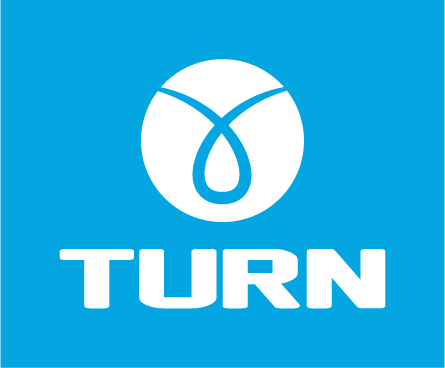Layered Lines, Distinctive Worlds: A Conversation With Artist Nigel Sussman
Posted: Aug 25 2025
From bustling cityscapes to whimsical machines, illustrator Nigel Sussman has carved out a visual universe defined by detail, curiosity, and unexpected delight. Known for his isometric explosions of color and controlled chaos, Nigel brings a rare perspective to every project he touches—including his recent collaboration with TURN. In this exclusive interview, we explore how he builds a vibe, the quirky rituals behind his process, and how his most recent art piece came into being. Dive in for a behind-the-scenes peek at what happens when artistic worlds collide.

-
There’s always so much to discover in your work—tiny surprises, layered meaning. Do you ever hide Easter eggs in your designs?
I have always been attracted to complex and intricate things, and it definitely shows in my work. It is fascinating to me that the process of layering many different distinct elements can become something new and unique and exciting, even if the pieces are mundane on their own.
-
What is your personal artistic process when it comes to commissioned art? How do you go about building the vibe? Do you employ any unique habits or personal rituals in flushing out the concept?
Drawing has always been something that I enjoyed doing. I draw for fun, as a creative outlet, and a communication tool. Being consistent comes mostly with practice, and I try to practice whenever possible. If I am ever at a loss for creative ideas for a new project, I work on something else for a while and then come back to it later.
-
How did your visual style evolve into what it is today? Was there a defining moment—or did it sneak up on you over time?
My style has definitely evolved overtime. I learned a lot of different techniques while studying illustration in College. After graduating, I was trying out a number of different styles while I was also working a day-job in advertising and was possibly learning from the process of iteration and feedback that happens in commercial art. During this time period I had an art show at a local bar wherein I was showing some new paintings of animals and a single large line drawing in an isometric style. I got a number of inquiries about the drawing but none about the paintings. Ever since, I have been working pretty much exclusively in that, focusing my efforts toward the types of work that I enjoy making but also evoke the most positive reaction from the public.
-
Looking back, what early influences—books, cartoons, architecture, chaos—shaped your creative instincts and helped carve out your artistic identity?
When asked about my artistic influences, I usually quote Martin Hanford (Illustrator of “Where’s Waldo?”), M.C Escher, and the original SimCity computer games. There is a German word specifically describing the genre of busy, seek-and-find illustration: “Wimmelbilder”. Other art that I love and things that definitely influence me would be cross-section illustrations (especially Stephen Beisty), Tintin Comics, and vintage nature illustrations. I am also heavily inspired by walking around cities and busy urban landscapes, complex machines/production lines, and technical/patent illustrations, music, and of course, food!
-
Your work has such a distinct personality—how do you keep your style consistent while still letting each new piece feel fresh and unexpected?
By imposing a few overarching ‘rules’ to control the chaos, I can maintain some consistency across a body of work regardless of the subject matter. I have a default formula which involves using a fixed visual perspective, a bold graphic line quality, and a thoughtful/limited color palette. The fixed isometric perspective used consistently over the majority of the work is the most unifying. ‘Isometric’ refers to fixed 30 degree/90 degree grid that allows the work to tile infinitely. This look is fun and familiar as is used in lots of video games and technical illustration. I can rendeder pretty much any subject matter and still get it to feel like it belongs by unifying it in color and style. Working on commissions keeps me constantly challenged with new concepts and ideas to draw. It never gets old!
-
How did the collaboration with TURN come about, and what was your first reaction when you were asked to design for a men’s gymnastics brand? What do you hope gymnasts and fans feel when they see your art created for TURN?
I was approached by TURN, as they had seen my large scale mural art around the community and liked the style. It is always an honor to be considered to represent a brand or organization, especially one that encourages persistence, athleticism, and community, like TURN.
- If you could illustrate any iconic gymnastics moment in history, what would it be—and what elements would you focus on?
The athleticism in gymnastics is so impressive. The speed, strength, and balance required. The way an amazing routine combines a series of simpler movements into something new has some parallels with how I structure my art. I would illustrate the each step in the flow of movements of the gymnast but layering them to view the routine all at once rather than linearly. - If you had to illustrate a gymnast’s mind mid-routine, what wild visual metaphors would you include?
My first idea for this would be harnessing the symbolism of animals. Illustration allows for unlimited fantasy, I love using animals as visual metaphor to human emotion and actions, as they are relatable, cross cultural, and interesting. By removing the reality we can think about every-day actions in a new light. Extreme speed and strength symbols like cheetah, gorilla, or gazelle, could work nicely for different gymnast attributes. - For younger gymnasts or artists who are also creative thinkers—what advice would you give for staying true to their unique style, on the mat or on the canvas?
My consistent advice for all creatives is to draw more. Not just for those who actually use drawing in their final product, but it also improves mental and physical dexterity and ability in painting, sculpture, design, construction, planning, and basic visual communication. Practicing that fundamental hand-eye connection can allow better spatial understanding and ability to communicate ideas with others in any field. I bet there would even be benefits for gymnasts!
Enjoy pursuing Nigel's fantastic online portfolio here: www.nigelsussman.com

